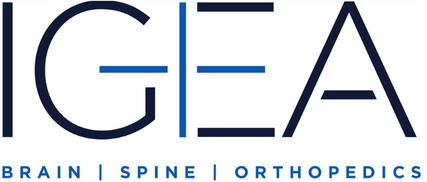MOVEMENT DISORDER SPECIALISTS IN NEW JERSEY & NEW YORK
WHAT ARE MOVEMENT DISORDERS?
Movement disorders are neurological conditions that have a negative effect on the fluency, speed, ease and quality of movement in the body. They are broken down into three categories:
- An abnormal speed or fluency of movement (dyskinesia)
- Involuntary or excessive movement (hyperkinesia)
- Slowed or nonexistent voluntary movement (hypokinesia)
WHAT ARE SOME COMMON SIGNS AND SYMPTOMS?
Signs and symptoms that many movement disorders share include:
- Changes in speech
- Impairment of voluntary and involuntary movements
- Poor coordination
- The condition gradually worsening over time
WHAT ARE SOME OF THE MORE TYPICAL MOVEMENT DISORDERS?
ATAXIA
Ataxia is a term used to describe a lack of muscle coordination or control of voluntary movement, making movements like walking, swallowing and speaking difficult. It is usually a sign of another underlying condition such as stroke, a tumor or cerebral palsy.
DYSTONIA
With dystonia, the muscles contract involuntarily, resulting in twisting or repetitive movements. The spasms—which can range from mild to severe—can affect:
- One part of the body (focal dystonia)
- Two or more adjoining parts of the body (segmental dystonia)
- The whole body (general dystonia)
ESSENTIAL TREMOR
Essential tremor is an involuntary shaking of body parts including the hands, arms, legs, jaw or tongue that is especially noticeable when the body is at rest. It is a well-known symptom of Parkinson’s disease another movement disorder.
HUNTINGTON’S DISEASE
Also known as Huntington’s chorea, Huntington’s disease is an inherited disorder that causes nerve cells in the brain to gradually break down. As a result, mental, behavioral and physical decline occurs over time, including impairment of voluntary and involuntary movements of the body.
PARKINSON’S DISEASE
Parkinson’s disease causes the deterioration of nerve cells in a specific part of the brain, causing a deficiency of dopamine levels. Dopamine is a neurotransmitter that enables communication among the brain cells that control motor function. The death of the nerve cells that produce dopamine results in the motor symptoms associated with the disease.
TOURETTE SYNDROME
Tourette syndrome is a condition that causes sudden and brief repetitive noises or movements known as tics. Males are three to four times more likely to develop this disorder than females. Motor (movement) tics can involve anything from eye blinking to hopping.
WHAT ARE SOME TREATMENTS FOR MOVEMENT DISORDERS?
In many cases, movement disorders can be managed with a variety of medications, including Botox injections. Physical or occupational therapy may also be a part of the multidisciplinary approach to care for these conditions.
Unfortunately, medications may also become less effective over time, especially if the disease is progressive. Surgical intervention—such as deep brain stimulation for Parkinson’s disease—may become necessary if other treatment modalities fail.

